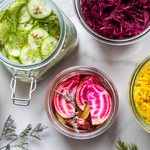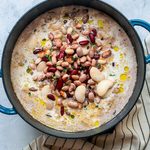Summer Slim-Down meal plan: Week 2
Follow our eight-week summer meal and fitness plans to look and feel your best, without feeling deprived. This week’s focus: Don’t forget the protein

Source: Web exclusive, June 2011
Congratulations on completing your first week! It was probably an adjustment, and whether you lost three pounds or nothing at all, be proud’the important part is to stick to the plan for the full eight weeks and make lifestyle changes that will last.
In week one, and for the first couple of weeks, ‘you’ll probably still get some cravings, such as carb cravings, especially if you’re adjusting from old habits where you were eating cookies and chips,’ says Mary Bamford, a Toronto-based registered dietitian.
And it’s not uncommon to have a desire for larger portions, but you’ll find that’s exactly what it is’a desire, rather than a need. Within time, says Bamford, ‘You’ll learn, ‘Guess what, this is enough and I feel energetic.” But in the early days, be strong: “It really takes determination to take care of yourself and have trust that this is a good thing to do.’
Feel full longer
As part of your meal planning, make sure you are having protein at every meal, says Bamford. A diet rich in protein will fill you up and leave you feeling satisfied longer, which will be especially helpful in curbing cravings and sensations of still being hungry. Bamford suggests choosing higher-protein foods from within the meat and alternatives food group or the milk and alternatives food group. "Nuts or milk in your cereal is not enough," she says. "That’s top-up protein."
With the abundance of grain-rich breakfast foods such as cereal, bagels and pastries to choose from, it’s easy to miss out on protein in the morning and overload on carbohydrates instead. ‘Not getting enough protein at breakfast and lunch is a big mistake for a lot of people,’ says Bamford. ‘People are good about getting protein at dinner, but it’s often missed during breakfast and lunch.’
Where to get your protein
Bamford recommends including a variety of high-protein foods in your diet such as eggs, chicken, salmon, Greek yogurt, cottage cheese or low-fat cheese.
To ensure you’re getting enough of this important nutrient, women should aim to include 100 to 150 calories of a higher protein food in each meal, while men should consume at least 200 to 250 calories of protein at each meal. ‘It will keep your energy levels up and keep you feeling full longer,’ says Bamford.
Don’t forget the fruits and vegetables
Along with watching your calories and ensuring you’re getting enough protein, make sure to include a ‘bare minimum of one to one and a half cups of fruit and vegetables’ with each meal, says Bamford. Since vegetables are an essential source of nutrients and usually very low in calories, Bamford considers these foods to be ‘free calories.’ So pile that plate high with veggies!
For protein-rich meal ideas check out our chicken and fish recipes, or try this sample lunch idea from Bamford.
‘ Open-faced chicken and avocado sandwich (4 oz/115 g chicken = 150 to 200 calories; 2 tablespoons/30 mL avocado = 50 calories; one slice whole-grain bread = 100 calories)
‘ 1-1/2 to 2 cups (375 to 500 mL) of vegetables
‘ Plain Greek yogurt with fruit = 100 calories
Total = 400 to 450 calories
Don’t miss out! Sign up for our free weekly newsletters and get nutritious recipes, healthy weight-loss tips, easy ways to stay in shape and all the health news you need, delivered straight to your inbox.




